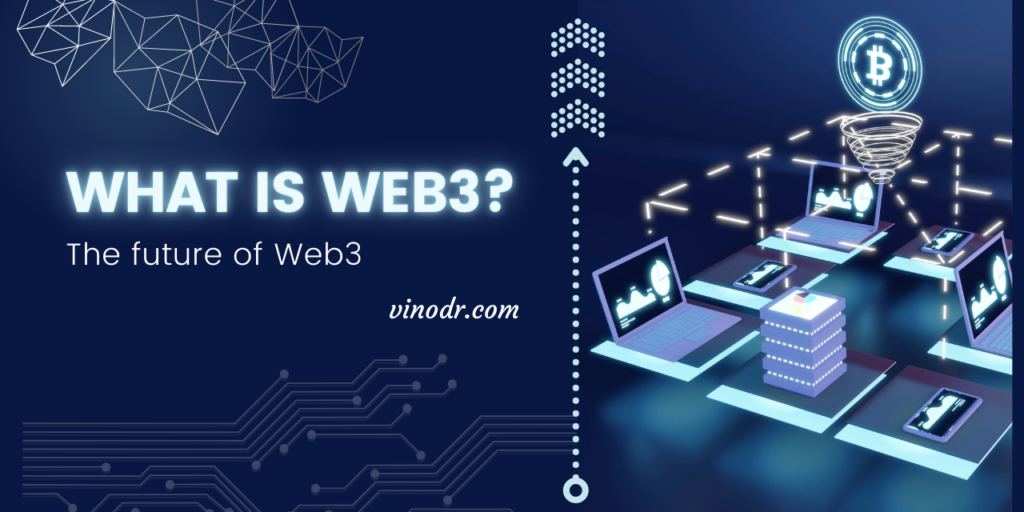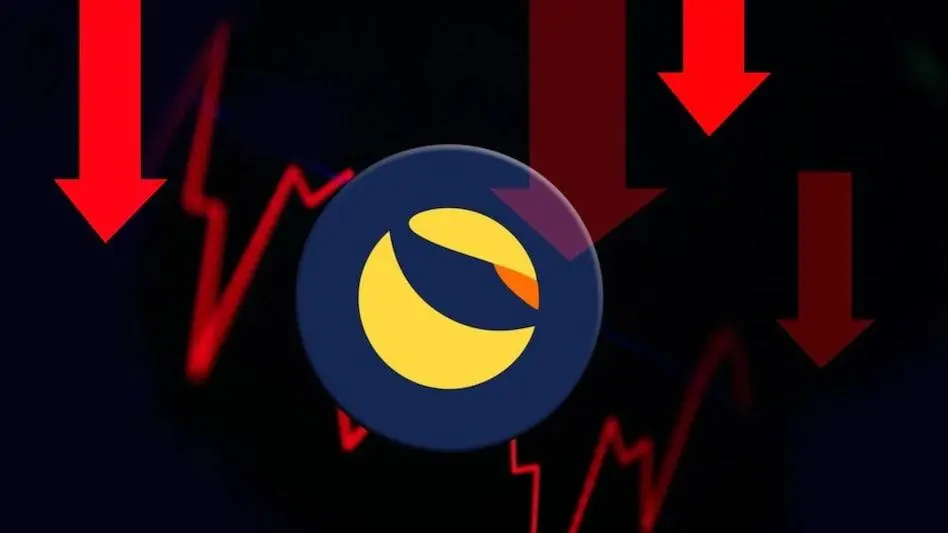What is Web3? The Future of Web3
Detailed analysis of web3, what is web3 its meaning and its future.
What is Web3?
Web 3, also known as the decentralized web or the semantic web, is the next generation of the internet that aims to provide a more decentralized, secure, and user-centric experience for its users. Let’s look into the previous versions of the web.
History of the Web:
The first generation of the web, Web 1.0, was a static web where users could only consume information without being able to interact with it. The second generation of the web, Web 2.0, introduced user-generated content and allowed users to interact with each other, leading to the emergence of social media, e-commerce, and other online platforms.
However, Web 2.0 is still centralized, meaning that data is controlled by a small number of large corporations, and users have little control over their data. This has led to concerns about privacy, data ownership, and data security.
Web 3 aims to address these concerns by creating a more decentralized and user-centric internet that is powered by blockchain technology and other decentralized technologies. We can say in simple terms that the meaning of web3 is users have control over their data.
Some examples of Web 3:
Decentralized social media: Social media platforms like Minds, Steemit, and Mastodon are examples of decentralized social media platforms that are built on blockchain technology. These platforms allow users to own their data and control who has access to it.
Decentralized Finance (DeFi): DeFi platforms like Uniswap, Aave, and Compound are examples of decentralized financial platforms that allow users to transact with each other directly without the need for intermediaries like banks. These platforms are powered by smart contracts and blockchain technology, making them more secure and transparent than traditional financial systems.
Non-Fungible Tokens (NFTs): NFTs are unique digital assets that are stored on a blockchain. They allow artists, musicians, and other creators to monetize their work by selling them as NFTs, which are traded on decentralized marketplaces like OpenSea and Rarible.
Web 3 represents a paradigm shift in the way we interact with the internet. By providing a more decentralized, secure, and user-centric experience, Web 3 has the potential to transform the way we communicate, transact, and create value online.
How do web3 and Cryptocurrency connect?
Web3 and Cryptocurrency are closely connected because both are built on blockchain technology, which is the underlying technology that powers the decentralized web.
Cryptocurrencies like Bitcoin and Ethereum were some of the earliest and most well-known applications of blockchain technology. They are decentralized digital currencies that allow for peer-to-peer transactions without the need for intermediaries like banks.
Web3 takes the idea of decentralization further by building decentralized applications (dApps) that are powered by blockchain technology. These dApps can be used for a variety of purposes, from social media and e-commerce to finance and governance.
One of the key features of blockchain technology is its ability to create trust and transparency in a decentralized system. This is achieved through a consensus mechanism, which allows for the verification and validation of transactions without the need for a central authority. In a cryptocurrency network, this consensus mechanism is used to validate transactions and maintain the integrity of the network.
In Web3, the same consensus mechanism is used to validate transactions and ensure that the data stored on the blockchain is accurate and tamper-proof. This makes Web3 applications more secure and transparent than their centralized counterparts.
The connection between Web3 and cryptocurrency is rooted in the shared use of blockchain technology to create a more decentralized, secure, and user-centric internet.
DAO and Web3
DAO, or Decentralized Autonomous Organization, is an organization that is run on a decentralized network, typically a blockchain. The idea of a DAO is to create a self-governing organization that is controlled by its members through a system of smart contracts and consensus mechanisms.
The concept of a DAO emerged in 2016 with the creation of “The DAO,” a decentralized investment fund built on the Ethereum blockchain. The DAO raised over $150 million in funding through an initial coin offering (ICO) and was intended to be a community-run investment fund that would invest in decentralized projects.
However, the DAO was hacked shortly after its launch, resulting in the loss of over $50 million worth of Ether. This led to a contentious hard fork of the Ethereum blockchain, which ultimately resulted in the creation of Ethereum and Ethereum Classic.
Despite the initial failure of The DAO, the concept of a DAO continued to evolve, and several successful DAOs have since been launched. These include MolochDAO, MakerDAO, and Aragon, among others.
Web3 and the concept of a DAO are closely related because a DAO is essentially a decentralized application (dApp) that is built on a blockchain. The decentralized nature of the blockchain allows for the creation of a self-governing organization that is controlled by its members without the need for intermediaries.
Web3 provides the infrastructure and tools needed to build and operate a DAO. Smart contracts, which are self-executing contracts that are stored on the blockchain, are used to govern the operations of a DAO. Consensus mechanisms, such as proof-of-work or proof-of-stake, are used to validate transactions and ensure the integrity of the network.
The evolution of DAOs is closely tied to the development of Web3 and the decentralized web. By enabling the creation of self-governing organizations that are run on a decentralized network, Web3 has the potential to transform the way we organize and govern ourselves.
How will Web3 change the Future?
Web3 has the potential to transform the future in several ways, by providing a more decentralized, secure, and user-centric internet. Here are some potential ways that Web3 could change the future:
Decentralized Governance: Web3 could enable the creation of more decentralized forms of governance that are controlled by their members through a system of smart contracts and consensus mechanisms. This could lead to more transparent and democratic decision-making processes that are less susceptible to corruption or manipulation.
Economic Empowerment: Web3 could enable more economic empowerment by allowing individuals to own and control their data and assets. This could lead to a more equitable distribution of wealth and the creation of new economic models that are more sustainable and inclusive.
Improved Privacy and Security: Web3 could provide better privacy and security by allowing individuals to control who has access to their data and assets. Decentralized networks are less susceptible to hacking or data breaches, making them more secure than centralized networks.
Decentralized Applications: Web3 could enable the creation of new decentralized applications (dApps) that are built on a decentralized network. These dApps could be used for a variety of purposes, from social media and e-commerce to finance and governance. This could lead to the development of new business models that are more sustainable and less reliant on intermediaries.
Interoperability: Web3 could enable greater interoperability between different blockchain networks and protocols. This could lead to the creation of new standards and protocols that allow for seamless communication and transactions between different networks, making it easier to exchange value and information across the decentralized web.
Web3 has the potential to transform the future. It could lead to the development of new economic models, governance structures, and business models that are more sustainable, equitable, and transparent.
Sectors web3 will disrupt shortly.
Web3 can disrupt a wide range of sectors shortly. Some of the sectors that are likely to be impacted by Web3:
Finance: Web3 has the potential to transform the finance industry by enabling decentralized finance (DeFi) applications that allow for peer-to-peer transactions without the need for intermediaries like banks. This could lead to more efficient, transparent, and accessible financial systems.
Social Media: Web3 could disrupt the social media industry by enabling decentralized social media platforms that give users more control over their data and privacy. This could lead to more user-centric platforms that are less susceptible to manipulation and censorship.
E-commerce: Web3 could disrupt the e-commerce industry by enabling decentralized marketplaces that allow for peer-to-peer transactions without the need for intermediaries like Amazon or eBay. This could lead to more efficient and transparent marketplaces that benefit both buyers and sellers.
Identity and Authentication: Web3 could transform the way we think about identity and authentication by enabling decentralized identity solutions that allow individuals to own and control their identity data. This could lead to more secure and efficient systems for authentication and identity verification.
Supply Chain Management: Web3 could disrupt supply chain management by enabling decentralized supply chain solutions that provide greater transparency and accountability. This could lead to more efficient and sustainable supply chains that are less susceptible to fraud and corruption.
Energy: Web3 could disrupt the energy industry by enabling decentralized energy solutions that allow for peer-to-peer transactions and greater control over energy production and consumption. This could lead to more efficient and sustainable energy systems.
Web3 has the potential to disrupt a wide range of sectors shortly by enabling more decentralized, secure, and user-centric solutions. It could lead to the development of new business models, governance structures, and economic systems that are more equitable, sustainable, and transparent.
Top Web3 Jobs
The Web3 ecosystem is still relatively new and rapidly evolving, but there are already a variety of job opportunities emerging in the space. Here are some of the top Web3 jobs:
Blockchain Developers: These developers specialize in building decentralized applications (dApps) on blockchain platforms like Ethereum or Polkadot. They are responsible for writing smart contracts and developing the underlying infrastructure of these platforms.
Smart Contract Developers: These developers are responsible for writing the code that executes on blockchain platforms. They work closely with blockchain developers to ensure that smart contracts are properly integrated into dApps.
Solidity Developers: Solidity is a programming language used to write smart contracts on Ethereum. Solidity developers specialize in writing code in this language and understanding the underlying principles of blockchain technology.
Web3 Frontend Developers: These developers specialize in building user interfaces (UIs) for dApps. They work with blockchain and smart contract developers to ensure that the UI is properly integrated with the underlying blockchain technology.
Cryptography Experts: Cryptography is a key component of blockchain technology, and experts in this field are in high demand. These professionals specialize in developing and implementing cryptographic protocols and algorithms.
Security Engineers: Security is a critical concern in the Web3 ecosystem, and security engineers are responsible for ensuring that dApps and blockchain platforms are secure and resistant to attacks.
Product Managers: Product managers play a critical role in the Web3 ecosystem by identifying user needs and developing dApps and blockchain platforms that meet those needs.
UX/UI Designers: User experience (UX) and user interface (UI) design are critical components of any successful dApp or blockchain platform. UX/UI designers are responsible for creating intuitive and user-friendly interfaces for these applications.
There are a variety of job opportunities emerging in the Web3 ecosystem, and these are just a few examples of the roles that are in demand. As the ecosystem continues to evolve, it’s likely that new job opportunities will emerge as well.
Web3 represents a significant shift in the way we think about the internet and the applications that run on it. By enabling decentralized, peer-to-peer networks, Web3 has the potential to transform a wide range of industries and create new opportunities for innovation and economic growth. However, there are also significant challenges that need to be addressed, such as issues around scalability, interoperability, and user adoption. Nonetheless, the Web3 ecosystem is rapidly evolving, and there are already a variety of exciting projects and initiatives underway that are pushing the boundaries of what is possible with this technology. As we move forward into the Web3 era, it will be critical for developers, entrepreneurs, Cryptocurrency Investors and policymakers to work together to build a more open, equitable, and sustainable internet for all.



